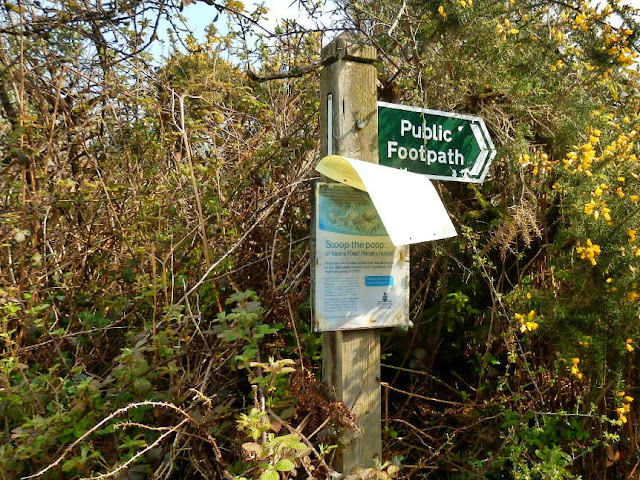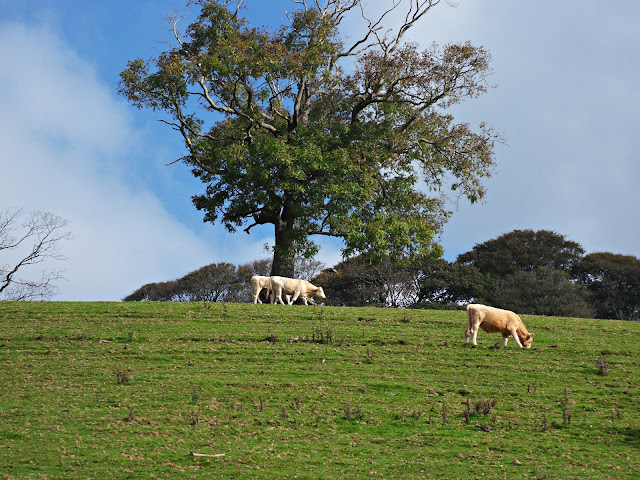A different sort of Cornish walk today, with no beautiful beaches or cliffs! Instead the 33 photos will take you on a circular walk starting in Gover Valley, St.Austell and through some of the old china clay district.
The walk starts in Gover Road, St.Austell. There are usually several places to park a car. Walk up the road to the viaduct and you are then properly in Gover Valley.
The London to Penzance train travels over the viaduct. There is greenery while you walk.
The first sign of any industry from the past is the large chimney on the right hand side of the road.
There are a few cottages and also an old chapel has been converted into living accommodation.
The track is in reasonably good shape and the occasional car might be seen.
More china clay workings to the left of the road.
Another photo below of the track.
You'll pass a pleasant house tucked away ...
... and they have put up an old road sign just in case you get lost!
A small stream follows the valley.
There are some more china clay workings on the right hand side of the track.
There is a sign that directs walkers to to the left for a shorter walk but we go straight on ...
... and avoid going over the wooden bridge.
The path gets stonier.

Many of the trees are covered in moss because of the dampness of the valley.
The path gets narrower still.
To the right it's now possible to get a clear view of the countryside. The hills are the waste product from the china clay industry - but nature is taking them over.
The same clay hills but a closer photo.
At last the path leads to a road, with a wind turbine nearly hidden away. The road is very little used - we saw no cars or other vehicles as we walked.
We walk left from here along the road, until we can get on to a footpath.
There are china clay settling tanks to the right of the road.
The views on the left show green fields.
It's also possible to see the sea! Unfortunately it was quite misty when we walked - but you can still make out Gribbin Head with it's tower.
The road forks, take the left fork and you'll see the Public Footpath sign. It may look like you are heading onto someone's private property but this is a legal footpath. A lovely new house is being built with glorious views.
We pass what I presume was once a farm house.
The footpath is quite green, which shows that not many people walk this way.
There are views over the countryside
... and we keep following the path.
Eventually we reach some houses where we have to turn left down Trevanion Hill. It's a proper road but there is only room for one car - so can cause a problem if two cars meet!
We head down Trevanion Hill and there is a spot on the right where we can see the Gover Valley and its viaduct.
Across the far side of the valley there is a farm with a few animals.
It's quite a drop going down the hill - but much easier than walking up the hill!
We arrive at the last photo and can see the chimney we saw in the fourth photo. We head down to the bottom of the hill, turn right and we are back where we started. Another walk completed. I think it took us about two and a quarter hours.





































































